
Backpacking packs and backpacking gear have gotten much lighter weight in recent years due to innovations in the materials and fabrics available to backpack manufacturers. Most 40-60L ultralight backpacks now weigh between 2 and 3 pounds. The ones we list below all have frames or frame stays and can usually carry between 25 and 35 pounds of backpacking gear, food, fuel, and water. If you need to carry more than that, you’ll want a bigger backpack. Less than that, you’ll probably want to get an even lighter, frameless, ultralight backpack.
Here are the 10 best ultralight backpacks in the 40L-60L range that we recommend.
Be sure to read our Ultralight Backpack Selection Guide below and the linked FAQs for even more advice and reader feedback. SectionHiker has an international reputation for its comprehensive men’s and women’s backpack reviews and we’re passionate about helping our readers find the best backpacks for their needs.
1. Zpacks Arc Haul Ultra 60L Backpack
The Zpacks Arc Haul Ultra 60L is an ultralight ventilated backpack with a suspended mesh back panel to keep you cool in hot weather. Made with waterproof and extremely durable Ultra 200 and 100 fabric, the 20.9 oz Arc Haul Ultra 60 is a seam-taped roll-top backpack with side water bottle pockets and a front mesh pocket for external gear storage. The torso length is adjustable by raising and lowering the shoulder pads, while the hip belt is available in multiple lengths. Daisy chains on the shoulder straps and hip belt let you easily customize the pack with accessory pockets, including ones from other pack manufacturers. The Arc Haul Ultra can haul up to 30 lbs comfortably.
A Woman’s model is also available. Read the
SectionHiker Arc Haul Ultra 60L Review.
Shop at Zpacks2. Hyperlite Mountain Gear Southwest 55 Backpack
The Hyperlite Mountain Gear Southwest 55L is a streamlined and durable backpack good for any kind of outdoor adventure from thru-hiking to wilderness backpacking. Made with super-strong but ultralight Dyneema Composite Fabrics, it’s seam-taped and effectively waterproof, with solid external pockets for increased durability. The frame on this roll-top pack consists of two aluminum rods, called frame stays, that can be bent for a custom fit. Weighing 2 lbs 2.5 oz, it has a maximum recommended load of 40 pounds. We recommend getting the black-colored version because it’s more durable than the white-colored one. The sizing is unisex.
Read the SectionHiker.com Southwest 55 Backpack Review.
Shop at Hyperlite3. Granite Gear Crown 3 60 Backpack
The Granite Gear Crown 3 60 is an ultralight-style roll-top backpack that’s well-suited for thru-hiking, section hiking, and multi-day backpacking trips. Weighing between 32.6 oz to 44.6 oz with all of its optional components, it has all of the features you’d expect including an optional top lid (there’s a roll-top underneath), a large mesh front pocket, and side water bottle pockets. What makes this pack unique is an adjustable length hip belt so you get a custom fit, the ability to carry a bear can canister under the top lid, and wrap-around compression straps that make it easy to carry bulky gear. The Crown 3 60 has a maximum recommended load of 30-35 pounds.
A women’s model of the Crown 3 – 60, is also available.
Read the SectionHiker Crown3 60 Review.
4. Osprey Exos Pro 55/Eja Pro 55 Backpack
The Osprey Packs Exos Pro 55 is an ultralight version of the famed Osprey Exos Backpack, a longtime thru-hiker favorite, but weighs nearly one pound less. Weighing 2 lbs 2.6 oz fully configured, the Exos Pro 55 has a ventilated mesh back panel, an adjustable torso length, and rigid perimeter frame that makes it good for hauling heavier loads up to 25-30 pounds. The floating top lid can be removed if not needed, dropping the pack weight to 2 lbs even. Ultralight details and back ventilation make the Exos Pro 55 an ideal backpack for hiking in hot or humid conditions. A women’s model is available called the
Osprey Eja Pro 55.
5. ULA Circuit Backpack
The ULA Circuit Backpack is a popular multi-day backpack for thru-hikers and weekend backpackers. Weighing 37.3 ounces, this 68-liter backpack has a load-carrying capacity of 35 pounds and is available with men’s or women’s specific shoulder pads and a unisex hip belt. The Circuit has a roll-top favored by long-distance hikers, with a front mesh pocket, two large side water bottle pockets, and two large hip belt pockets. Lightweight, but bomber tough, this pack can last through a long-distance hike and come back for more!
Read the SectionHiker Circuit Backpack Review. Shop at ULA6. Gossamer Gear Mariposa 60 Backpack
The Gossamer Gear Mariposa 60 is a great pack for backpackers who are lightening their loads because it has plenty of storage. It’s intuitively organized for multi-day thru-hikes and section hikes with plenty of external pockets and covered storage. The Mariposa has a lightweight aluminum frame capable of carrying 35 pounds comfortably, and interchangeable hip belt sizes are available, ensuring a good fit. It’s made with Robic nylon which is good for on-trail use, but you may want something more durable for tougher terrain. Weighing 2 lb 2.5 oz, it has a unique side quiver pocket perfect for storing a tent or hammock. The sizing is unisex although a female-friendly hipbelt is available.
Read the SectionHiker Mariposa 60 Review.
Shop at Gossamer Gear7. REI Flash 55 Backpack

The REI Flash 55 Backpack is a 2 lbs 13 oz ultralight-style roll-top backpack with an optional top lid. The pack has all of the standard features of an ultralight-style backpack including a front mesh pocket, side water bottle pockets, and hip belt pockets. There are two things that set this pack apart from others. First, it comes with pockets and straps (called “packmods”) that can be removed without having to resort to scissors and can save an additional 7 oz of weight. Those same pack mods can be moved around to tailor the pack to your needs. The Flash 55 also has innovative side water bottle pockets that make it very easy to reach your bottles, with snap closures to secure tall bottles if you use them. A women’s specific model is also available.
Read the SectionHiker REI Flash 55 Review. We like to remove the top lid pocket (3.3 oz) for three-season use (and just use it like a roll top) and put it back on in winter for carrying several changes of hats and gloves.
Shop at REI8. Gregory Focal 58/Facet 55
The Gregory Focal 58 (women’s
Facet 55) are multi-day backpacks with mesh-backed trampoline-style perimeter frames capable of hauling 30-35 pounds. Weighing 2 lbs 9.3 oz, fully configured, the floating top lid and included rain cover can be replaced by an ultralight weather flap, dropping the pack weight close to 2 lbs 6.5 oz ounces. A front stretch mesh pocket, side water bottle pockets, and back ventilation make the Focal and Facet good packs for hiking in humid weather. The biggest difference between the Osprey Exos Pro and Eja Pro (listed above), and
Gregory Focal and Facet is that the 2022 Exos and Eja have an adjustable length torso.
Read our Gregory Focal 58 Backpack review or our
Gregory Facet 55 review. 9. Superior Wilderness Designs Long Haul 50
The Superior Wilderness Designs Ultralight Long Haul 50 is an ultralight rolltop backpack that uses two aluminum stays and a foam pad for a frame. It’s made using made with Ultra200X, a blend of UHMWPE & high-tenacity polyester that is incredibly strong, lightweight, and waterproof to 200 psi. While the pack has been stripped down to the bare essentials it has an integrated hip belt and numerous external attachment points so you can easily tailor it to your needs with a little accessory cord or webbing straps, making it suitable for four-season use. Weighing 30.2 oz, it can comfortably carry 35 pounds. Sizing is Unisex.
Shop at SWD10. Durston Gear Kakwa 55 Backpack
The Durston Gear Kakwa 55 is a streamlined ultralight-type backpack optimized for thru-hiking and backpacking. It has plenty of external open pockets so you can carry all of your daytime essentials without stopping to open the pack. But where this pack shines is in the frame and suspension system which does an exceptionally fine job of transferring the load to your hips.Sizing is unisex.
Read the SectionHiker Kakwa 55 review.Ultralight Backpack Selection Guide
Ultralight Backpack Frames
Most ultralight backpacks range from about 40 liters up to 60 liters in volume and usually weigh between 2 and 3 pounds. They’re intended for carrying loads between 25 and 40 pounds and have full frames or frame stays. The volume and weight capacity you need will depend on the amount of gear, food, fuel, and water you need to carry. This can vary from trip to trip, or town to town if you’re a thru-hiker or section hiker, but compression straps let you shrink a pack’s volume from 40L down to 60L as needed. Generally speaking, you want more “frame” for heavier loads, but this can be a matter of personal preference.
See the following FAQs for more advice and reader discussion:
Gender-Specific Backpack Features
Many ultralight backpacks are now available in men’s and women’s specific models, although there are a few exceptions. They also tend to have fixed torso lengths and hip belt lengths, although many backpack manufacturers have figured out that adjustable torsos and hip belts or ventilated backpacks give them a significant competitive edge. Many women prefer S-shaped shoulder straps and female-specific hip belts because they mold better to a “curvier” female form.
Backpack Fabric Durability
Most ultralight backpacks are made with Nylon and it’s variants include Robic Nylon, Dyneema Composite Fabrics (DCF), XPac, EcoPack, and Ultra. In terms of durability, Ultra is usually the most durable in terms of abrasion resistance, then EcoPak, XPac, DCF, and then Nylon, although it depends on the thickness of the material used. In addition, there are many different types of Nylon and thicknesses, which are measured by “deniers”, also abbreviated as “D” in “20D Nylon Ripstop. Usually, higher denier counts result in more durable fabrics.
Cost
Dyneema (DCF) packs are the most costly in terms of price, then Ultra, EcoPak, XPac, and then Nylon.
Backpack Covers and Pack Liners
DCF, Ultra, EcoPak, and XPac are waterproof materials so you can get by without a backpack cover if you wish. That said, the shoulder pads and hip belts on all backpacks are not waterproof and will absorb some water, but your gear will stay dry even if you don’t!
Most ultralight backpacks do not include a rain cover. If your backpack is not waterproof and rain is likely where you plan to hike, we recommend you get a backpack rain cover or line the inside of your backpack with a plastic bag. Some people do both or wear ponchos that cover themselves and their backpacks. See the following FAQs for more advice and reader discussion:
Roll Tops vs Top Lids
Some of the backpacks listed above are roll tops and some have top lids. Which you choose is a matter of personal preference. Roll tops can be nice because they’re more minimalist and require fewer webbing straps. But top lids are handy if you need to change hats or gloves frequently or access a map and navigation gear. Still, other packs, like the Granite Gear Crown3 60 and the REI Flash 55 are roll-tops, but come with an accessory top lid that can you attach over them. That’s really the best of both worlds.
Backpacking Fit
The most important factor when choosing an ultralight backpack is fit. Keep trying ones on until you get a torso length and hip-belt that fits you perfectly. Return policies and warranties matter. Stick close to manufacturers that guarantee their products, are easy to contact and want you to have the best experience possible. What makes an ultralight backpack great? It fits you, has easy-to-use external pockets or daisy chains to attach your own, and works well with your other backpacking gear choices.
Check Out All of SectionHiker's Gear Guides!
SectionHiker is reader-supported. We only make money if you purchase a product through our affiliate links. Help us continue to test and write unsponsored and independent gear reviews, beginner FAQs, and free hiking guides.
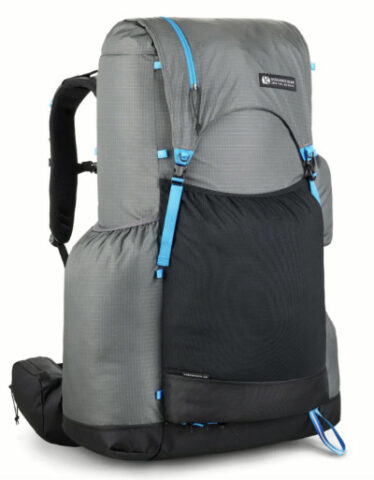
 SectionHiker.com Backpacking Gear Reviews and FAQs
SectionHiker.com Backpacking Gear Reviews and FAQs 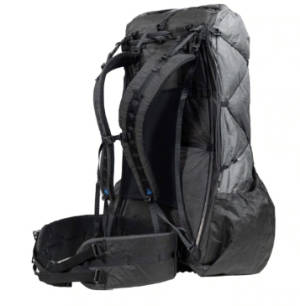





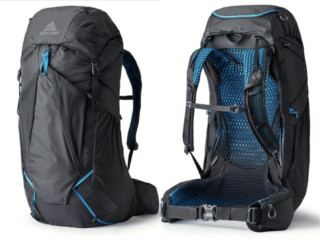
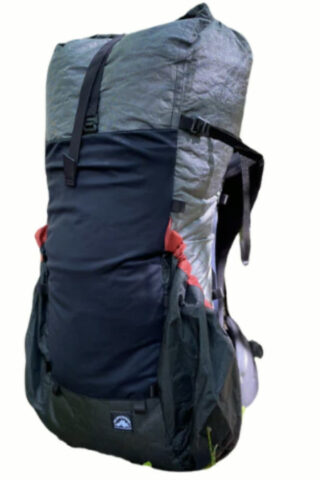
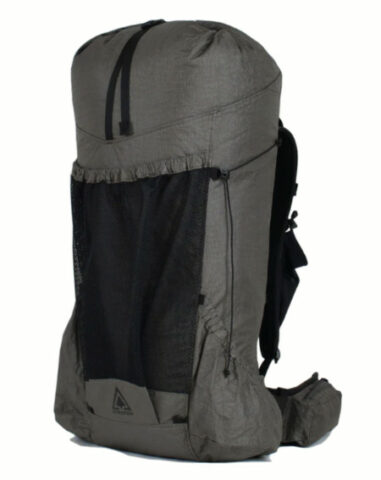
Hello,
Can you tell me what criteria you used in rating these packs 1 through 10.
It’s in no particular order. Everyone has different needs.
Hi Philip,
In your opinion, is the new REI Flash Air comparable to these packs and worth considering?
Thanks as always for your outstanding reviews!
I comment on that in my review of the new Flash Air pack.
https://sectionhiker.com/rei-flash-air-50-backpack-review/